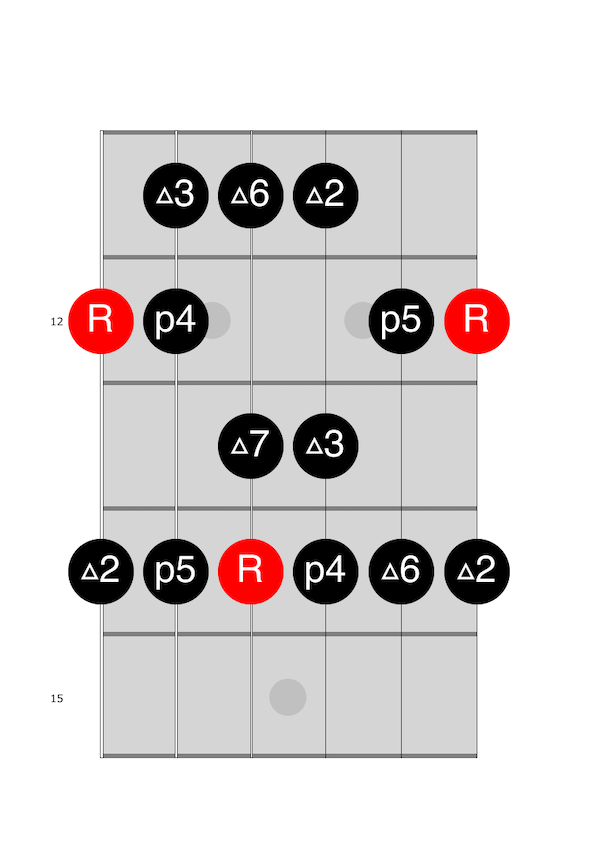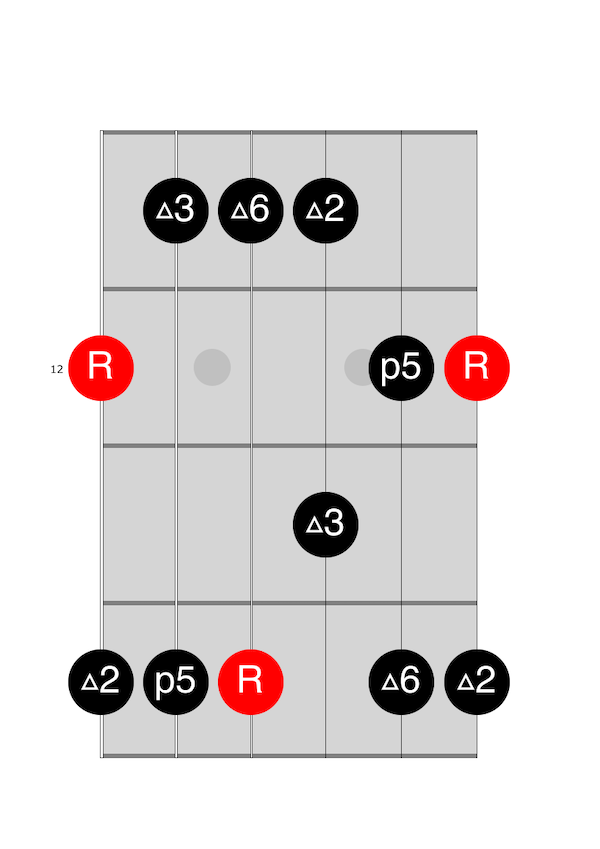Blue Sky Guitar Lesson (Allman Brother Band)
I’ve never heard any two guitarists play together in a Southern rock style as well as Duane Allman and Dickey Betts.
Whether it was their harmonized lead guitar lines…Or one holding down some rhythm for the other, the interplay between these two with the Allman Brothers Band was always magical…
So today I’m going to break down both their rhythm and lead guitar approaches in this “Blue Sky” guitar lesson.
So tune up, and let’s get started!
Who Wrote Blues Sky?
"Blue Sky" was written by guitarist Dickey Betts and was featured on their 1972 album titled Eat a Peach. Betts was known for his contributions as a songwriter and lead guitarist in The Allman Brothers Band, and "Blue Sky" is one of his most celebrated songs.
"Blue Sky" was recorded at Capricorn Sound Studios in Macon, Georgia, USA. Capricorn Sound Studios was a significant recording facility for The Allman Brothers Band and other Southern rock artists of the era.
While the song didn’t achieve chart-topping success as a single, it has become a fan favorite and is regarded as one of the band's signature tracks. In the guitar world, it is known for its beautiful and melodic guitar work. The harmonized guitar lines you hear in the song are a signature part of the sound of the Allman Brothers Band.
Who are the guitar players in Blue Sky?
Dickey Betts and Duane Allman are the two guitarists trading off throughout the song.
In fact, these two legends wrote the book on how two guitarists in a band should work together.
The Allman Brothers Band were known for their twin-lead guitar approach, with Dickey Betts and Duane Allman (who tragically died in a motorcycle accident in 1971) being the original twin lead guitarists. Duane Allman's guitar work significantly influenced the band's sound and contributed to their signature style. The song was one of Duane’s last recorded performances with the band. The mixing engineer on the album Johnny Sandlin said, "As I mixed songs like "Blue Sky," I knew, of course, that I was listening to the last things that Duane ever played and there was just such a mix of beauty and sadness, knowing there's not going to be any more from him."
Here are the isolated guitar parts of each below:
Blue Sky Chords
There are 5 chords you’ll need to know to play “Blue Sky” on guitar E, A, D/A, D, and B.
Let’s take a look at how you can play these chords on the neck next.
For E, we’ll play all 6 strings in open position like this:

A is played with one finger from the 5th string down like this:

D/A is a common shape played quickly off the A chord in the intro like this:

D is played from the 4th string down like this:

Finally, B is played as a bar chord with the root on the 2nd fret of the 5th string like this:

What key is Blue Sky in?
"Blue Sky" by The Allman Brothers Band is in the key of E major. The song's chord progressions and melodies are centered around the E major scale. It's the heart and soul of the song, infusing it with that bright and uplifting energy.
Let’s take a look at the chords and how they relate to the E major scale.
In the key of E major, the chords E, A, B, and D can be analyzed using Roman numerals, which represent the scale degrees of the key.
Here's how these chords relate:
- E Major (I): The E major chord is the tonic chord, represented by the Roman numeral I. It's the primary chord and the home base in the key of E major. The song starts and ends on the I chord.
- A Major (IV): The A major chord is the subdominant chord, represented by the Roman numeral IV. It's the chord built on the fourth scale degree (A) of the E major scale. A major in the key of E major often adds a sense of stability and is commonly used as a transition chord.
- B Major (V): The B major chord is the dominant chord, represented by the Roman numeral V. It's the chord built on the fifth scale degree (B) of the E major scale. The dominant chord typically adds tension and leads back to the tonic chord, E major, creating a sense of resolution.
- D Major (bVII): The D major chord is a whole step below the root E. This can be represented by the Roman numeral bVII. In the key of E major, it’s used quite often in classic rock styles.
These Roman numerals are a way of expressing the relationships between chords in a key, and they provide a theoretical framework for understanding how the different chords function within “Blue Sky”. In the key of E major, E (I), A (IV), B (V), and D (bVII) are common chords that can be combined in various ways to create chord progressions, melodies, and harmonies.
Blue Sky Solo
Since “Blue Sky” is in the key of E, the E major scale can be used for soloing over the song. But also the E major pentatonic as well. Let’s take a look at each scale and some examples next.
The E major scale has seven notes in it. It's one of the most important scales to know in Western music. The notes in the E Major Scale are:
E (the tonic or root note)
F# (the major 2nd)
G# (the major 3rd)
A (the perfect 4th)
B (the perfect 5th)
C# (the major 6th)
D# (the major 7th)
E (octave, the tonic an octave higher)
The E major scale follows a specific pattern of intervals, which are measured in half steps (also known as semitones) and whole steps (also known as whole tones). The pattern for the E major scale is as follows:
Whole, Whole, Half, Whole, Whole, Whole, Half
This means that between each note in the scale, you have either a whole step (two frets on the guitar) or a half step (one fret on the guitar), following this pattern.
Here's one common fingering for the E major scale on the guitar at the 12th fret:

The E major pentatonic scale is another crucial scale to master for guitarists and works great in "Blue Sky". Unlike the full E major scale with seven notes, the E major pentatonic scale is a simplified version consisting of just five essential notes. The Allman Brothers Band used this scale extensively in their music.
Here are the notes in the E Major Pentatonic Scale:
E (the tonic or root note)
F# (the major 2nd)
G# (the major 3rd)
B (the perfect 5th)
C# (the major 6th)
The E major pentatonic scale is a favorite among guitarists for crafting solos and melodies. It follows a specific interval pattern, which is measured in whole and half steps as well, creating a unique musical character.
The pattern for the E major pentatonic scale is as follows:
Whole, Whole, Whole and a Half, Whole, Whole
This means that between each note in the scale, you have either a whole step (two frets on the guitar) or a whole step and a half step, following this pattern.
Here's one common fingering for the E major pentatonic scale on the guitar, often used at the 12th fret for that classic sound:

Once you feel comfortable with the scales. Then you'll want to take the notes from the scale and work on arranging them in a musical way. You'll want to play melodies. This can be done by using a number of techniques and devices. Below are a few examples of phrases in the style of the Album Brothers.
Example #1 uses two different positions of the scale and blends techniques like pull-offs, slides, and string bends like this:

Example #2 dives deeper into the E major scale sound. This lick uses a little theme and repeats a similar pattern through different notes of the scale:

Example #3 starts out sliding down all on the second string. Then it ends with a similar pull-off idea as what we played in Example #2.

There are a few sample phrases. Practice them and then try to make up some of your own.
Conclusion:
In the end, “Blue Sky” by The Allman Brothers Band stands as an enduring monument to the musical genius of Dickey Betts and Duane Allman. The interplay between their guitar parts is a complete masterclass in how two guitarists can play together in a band.
So, keep practicing, and for another great Allman Brothers Band-style guitar lesson check out “Midnight Rider”, or “Stormy Monday” next!
Like this blog post? Get Jon’s best guitar lessons straight to your inbox.
